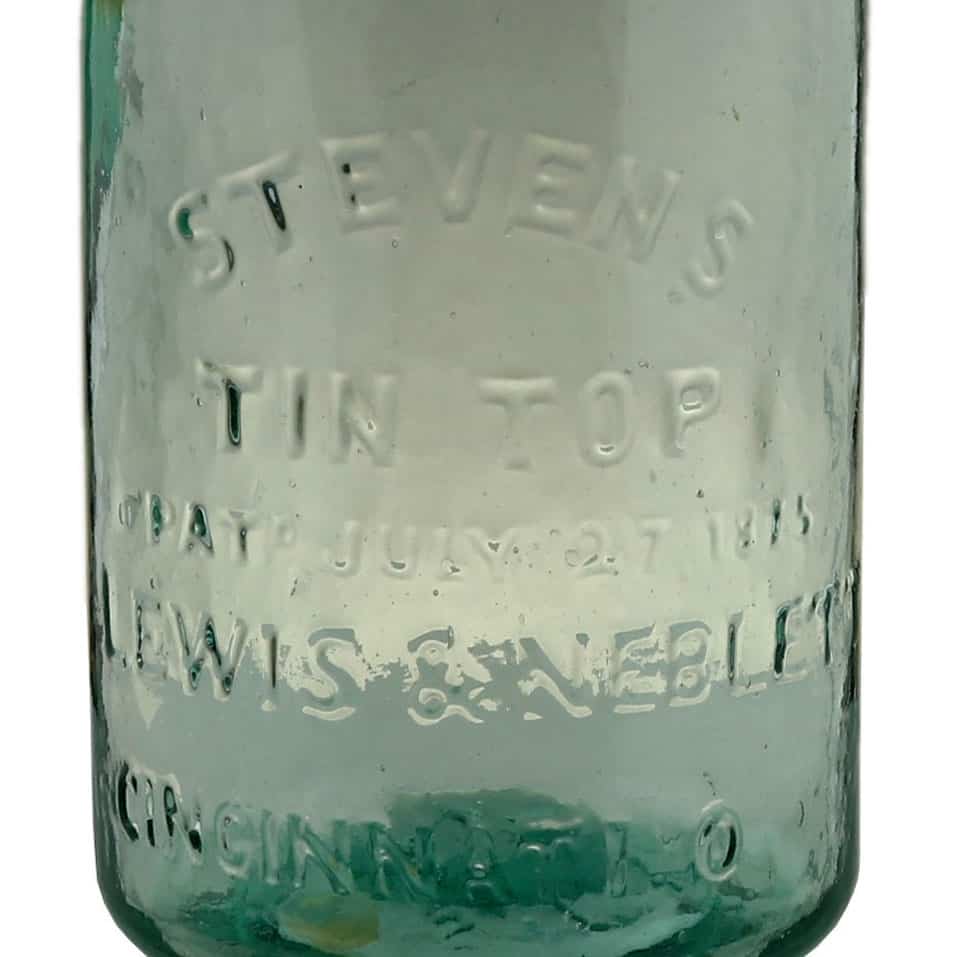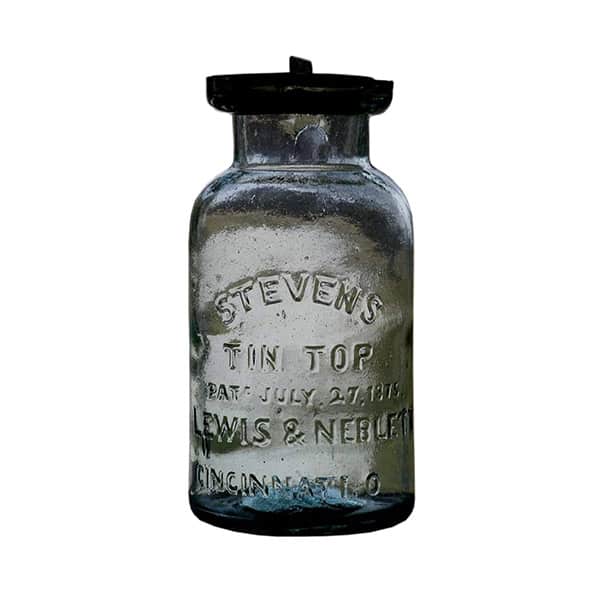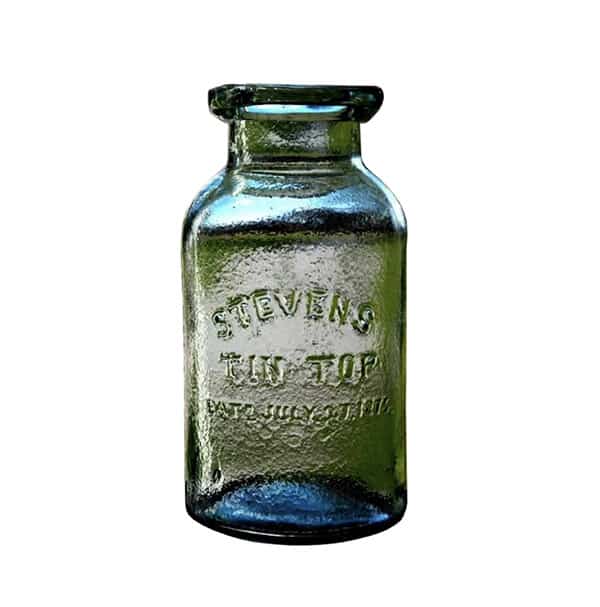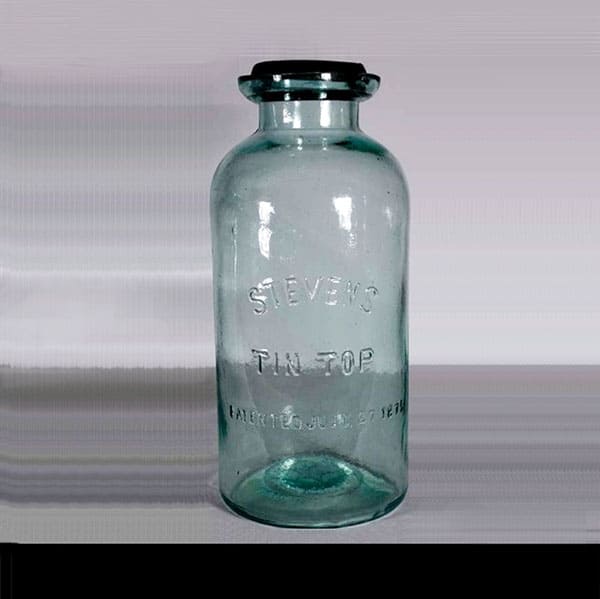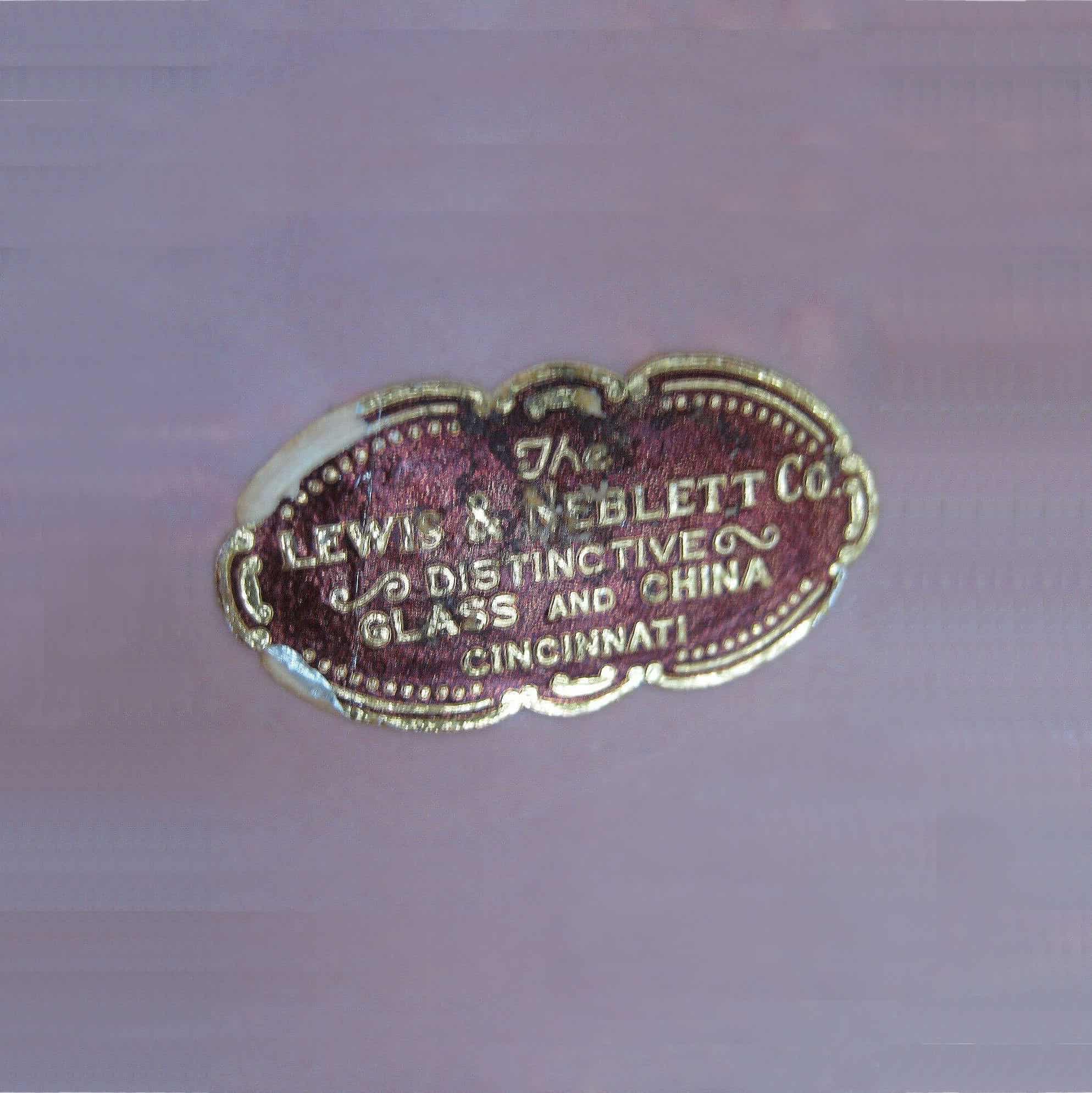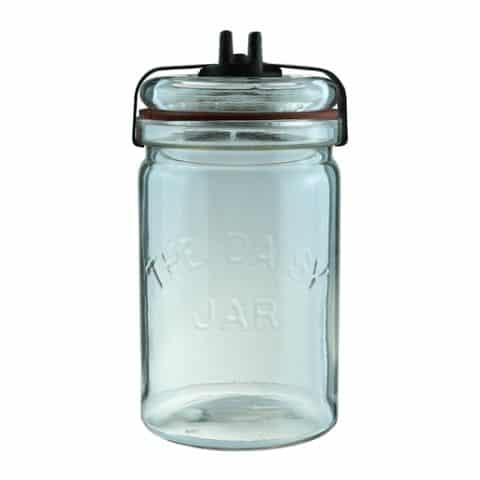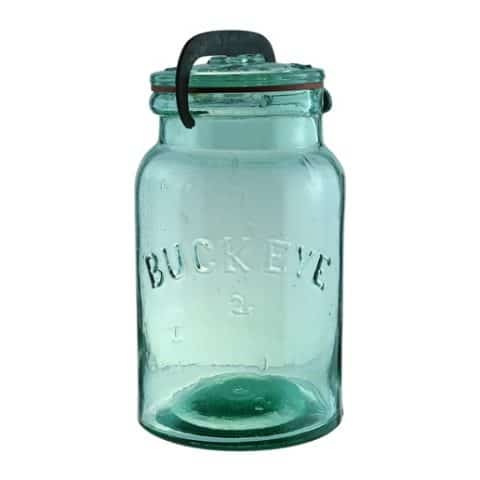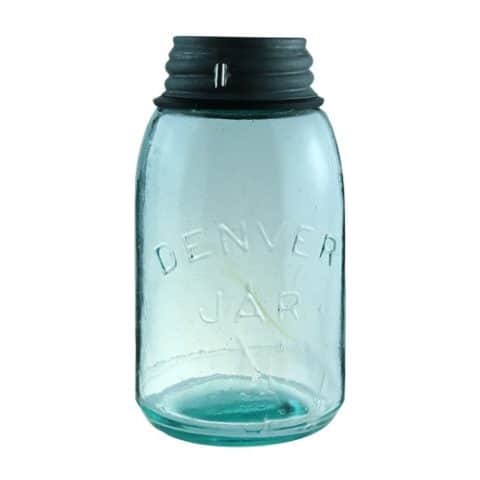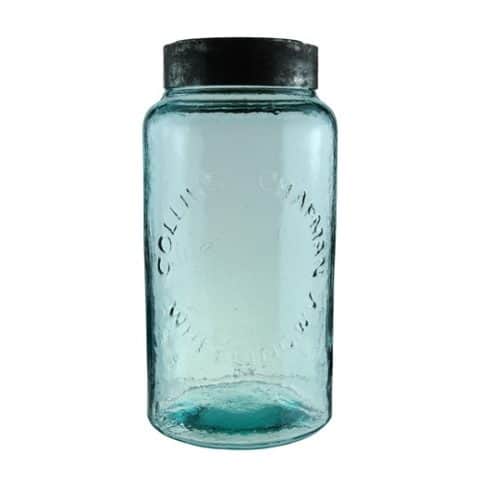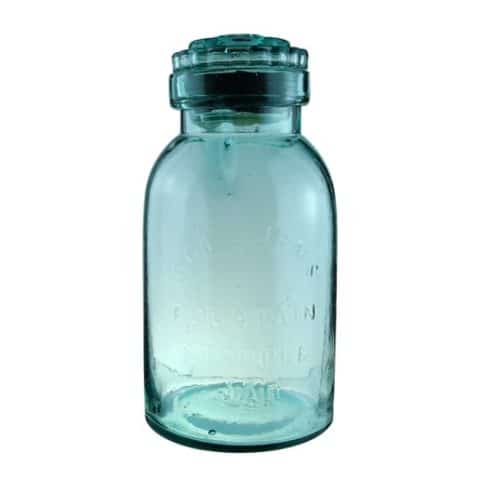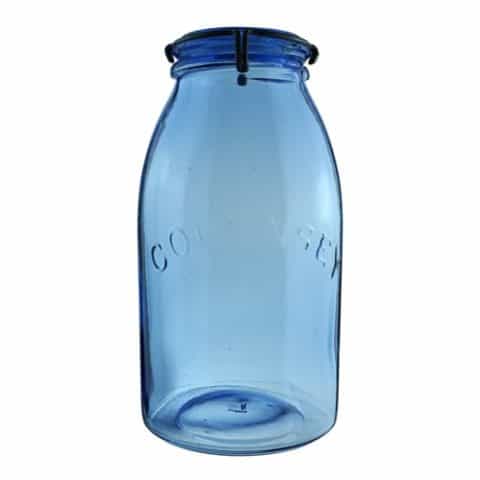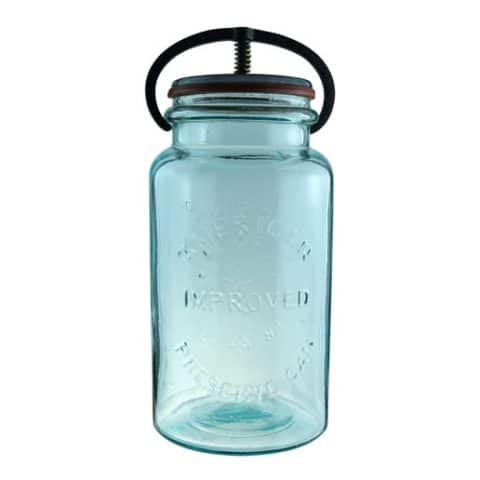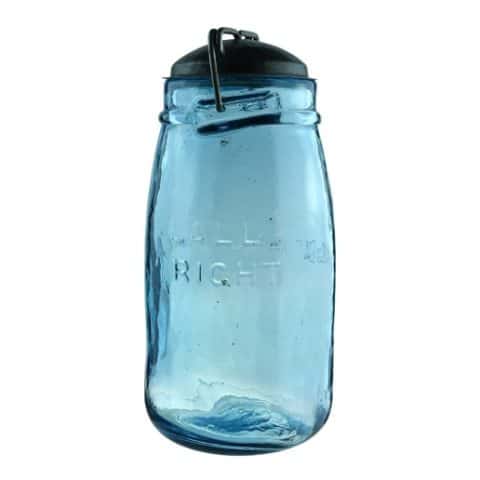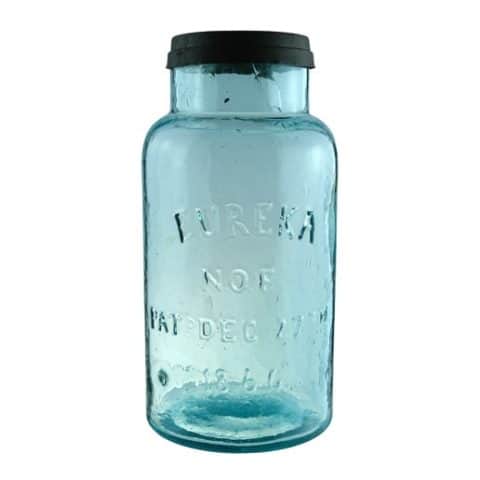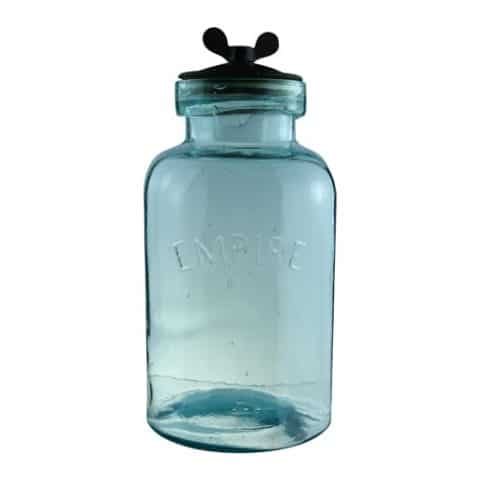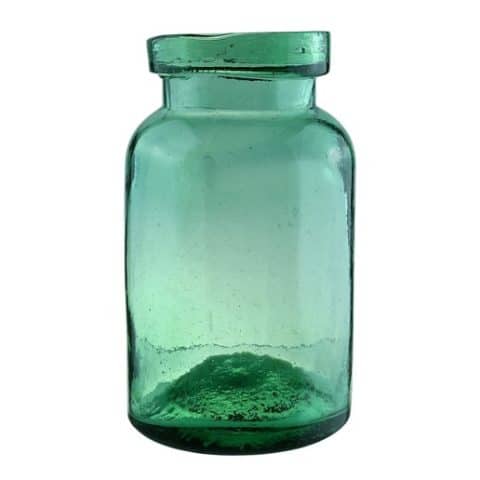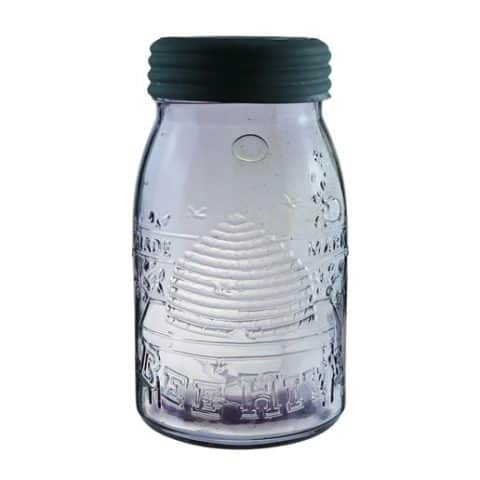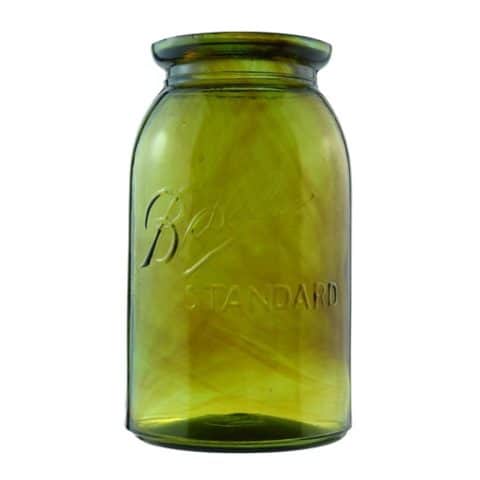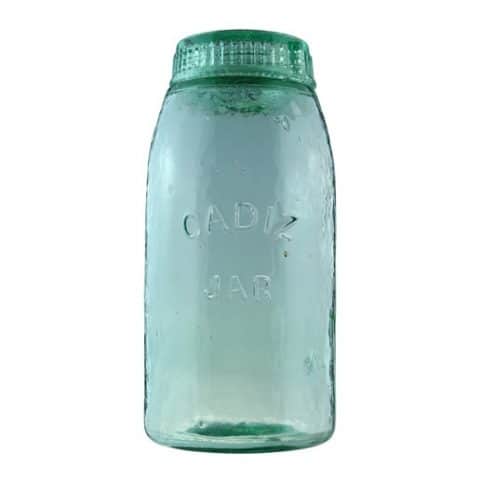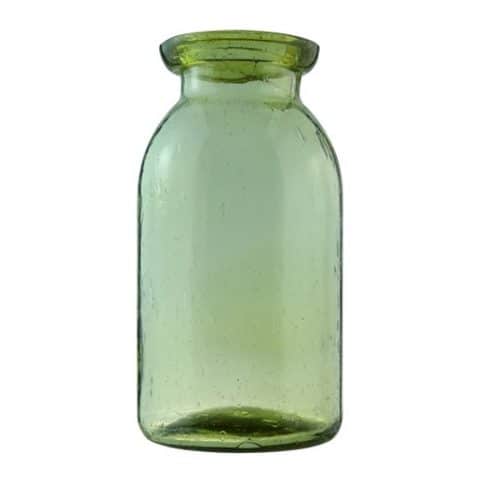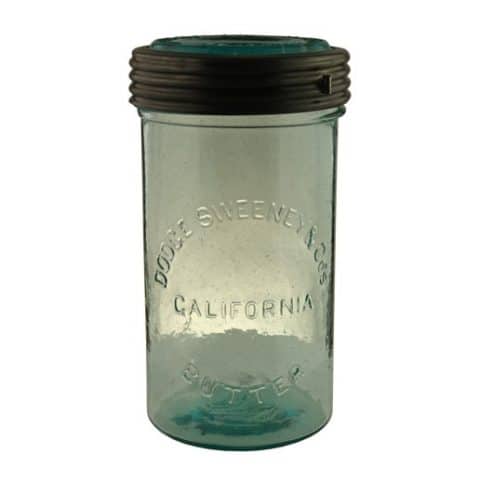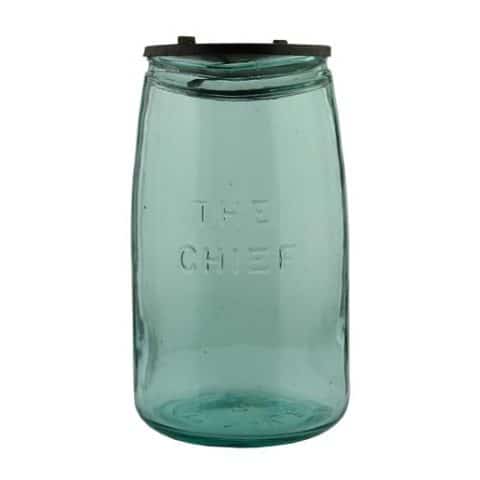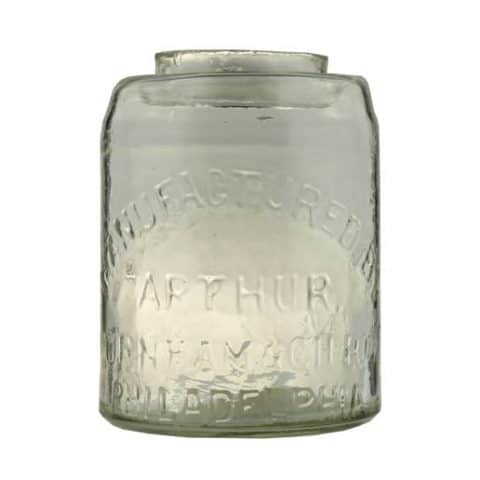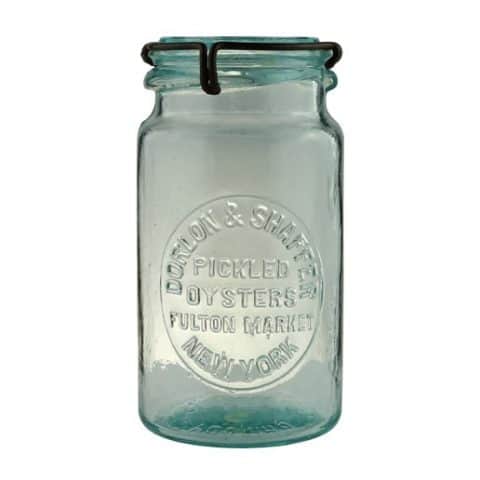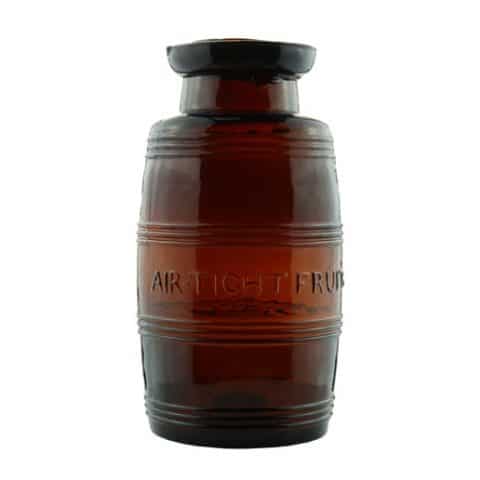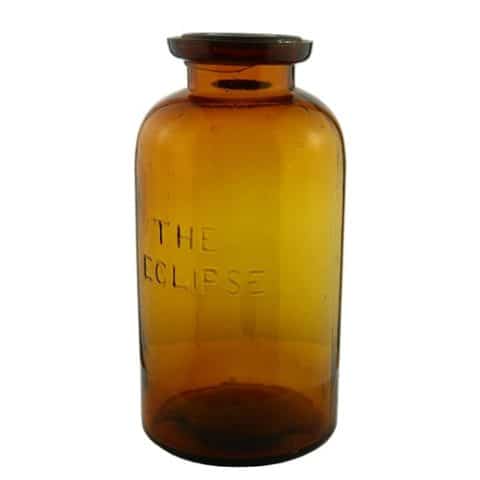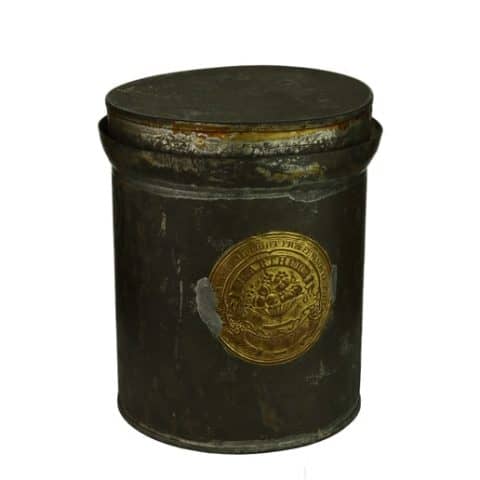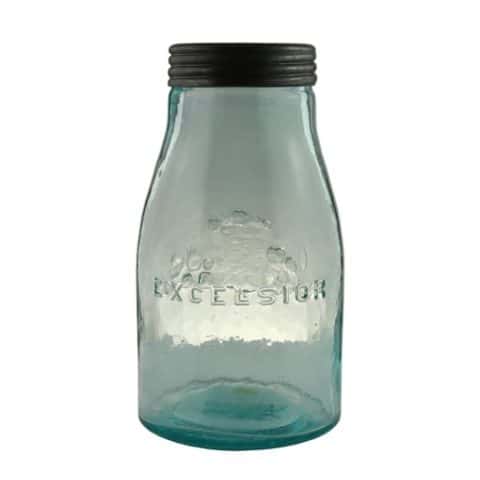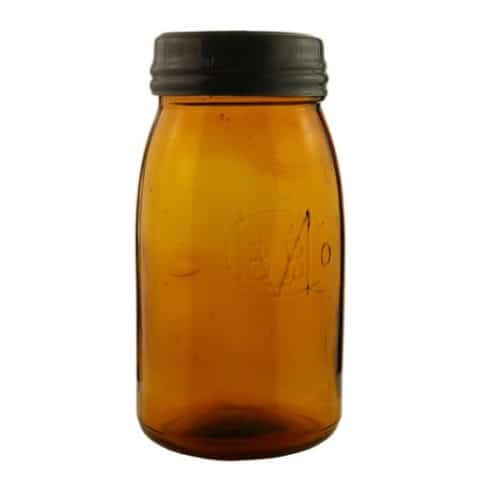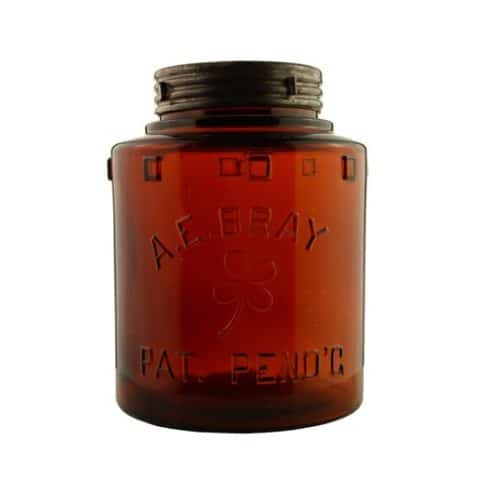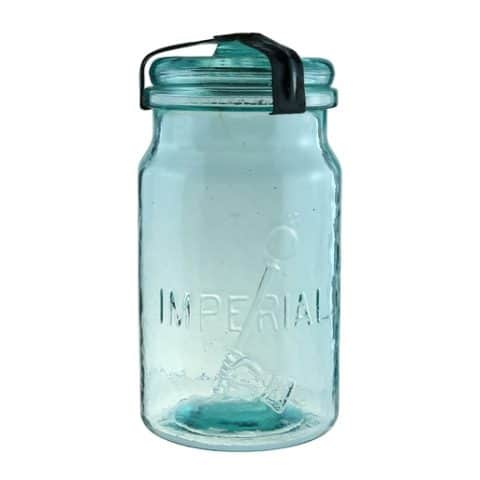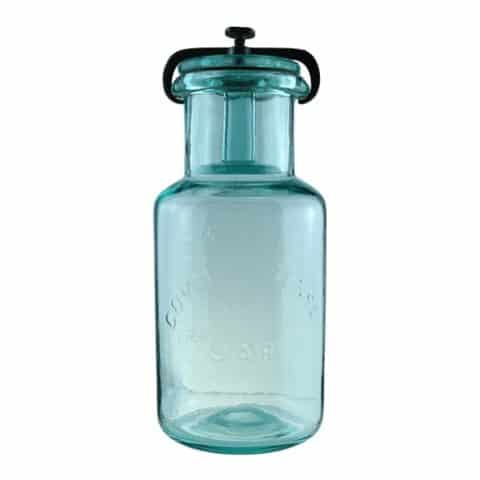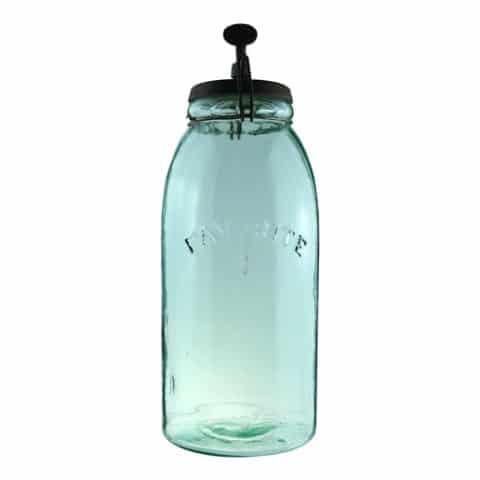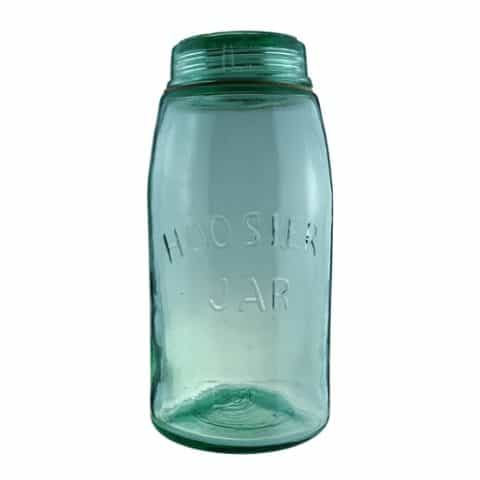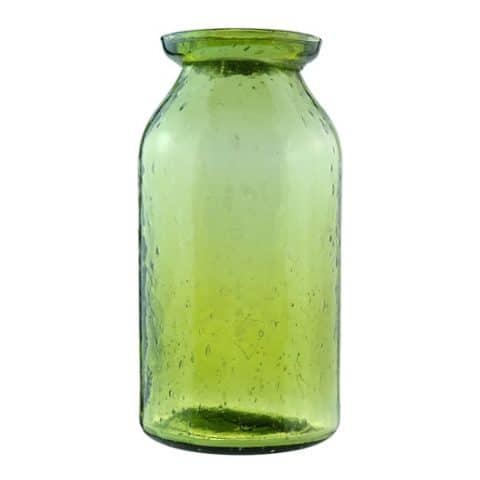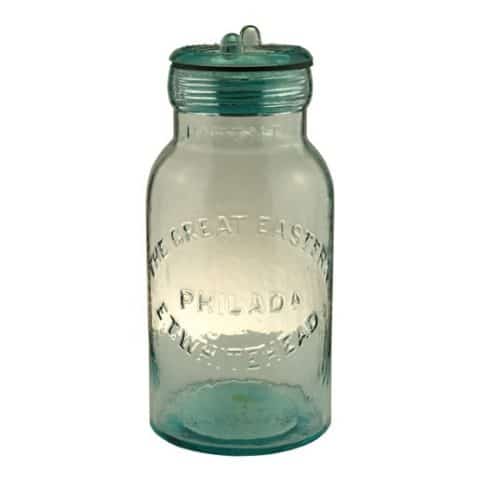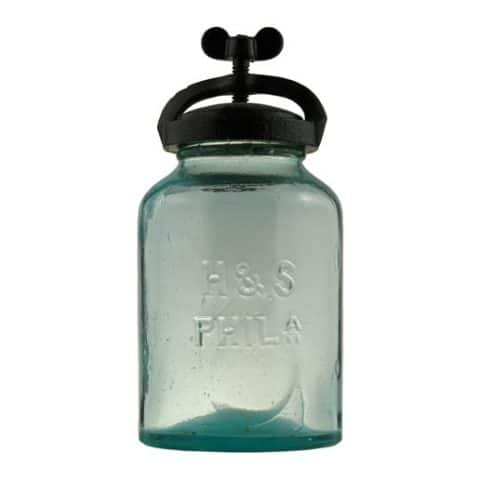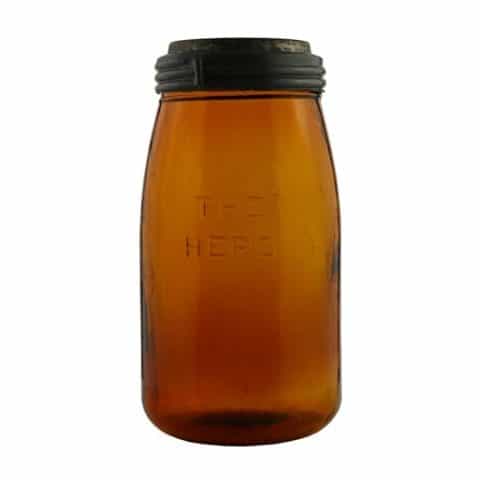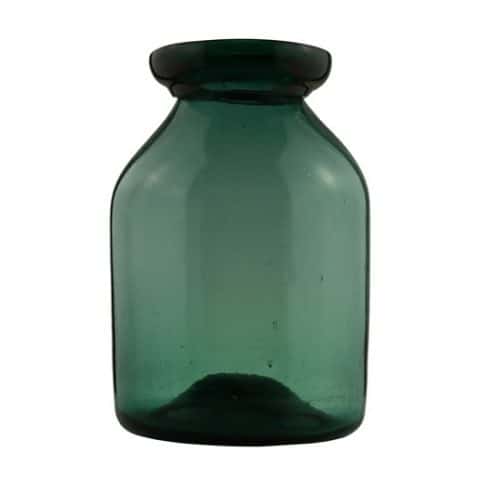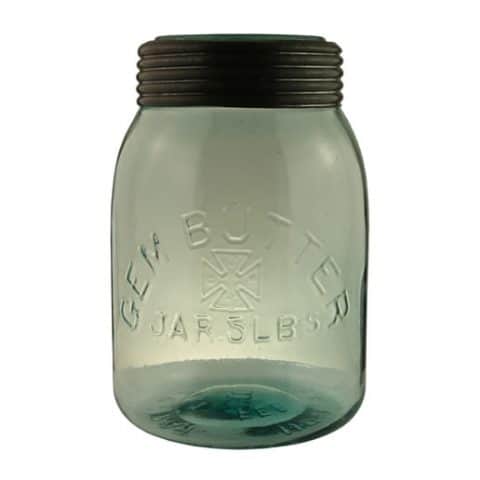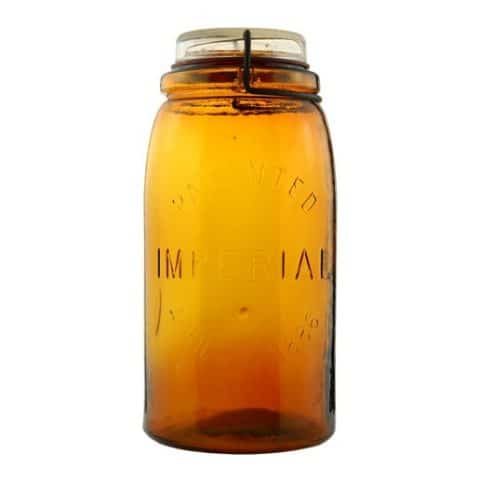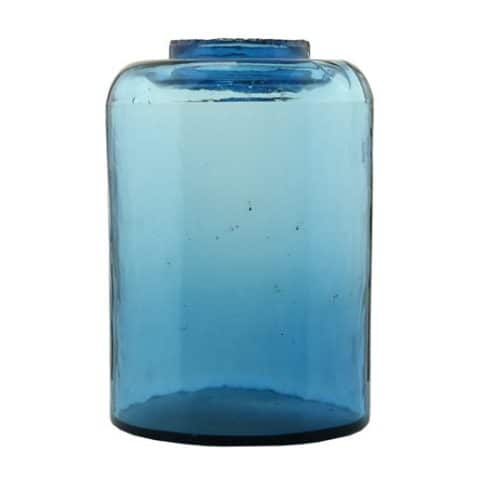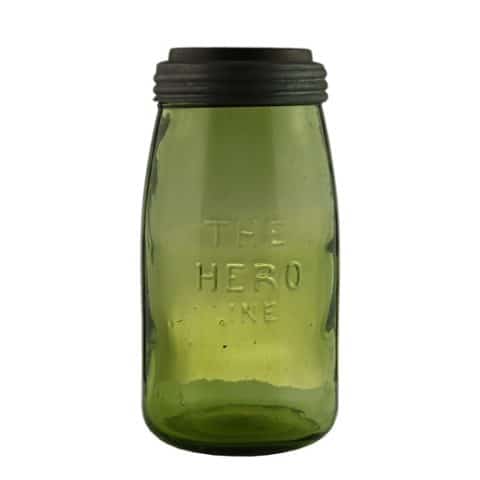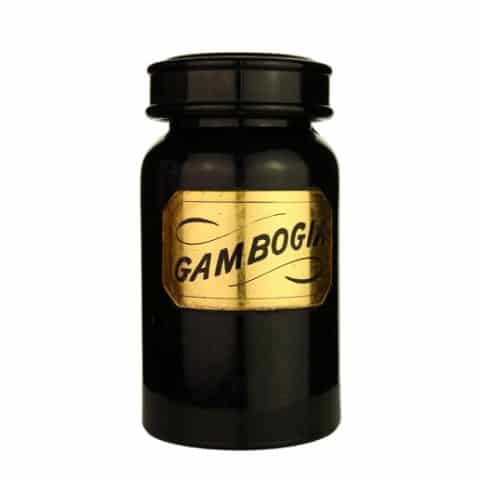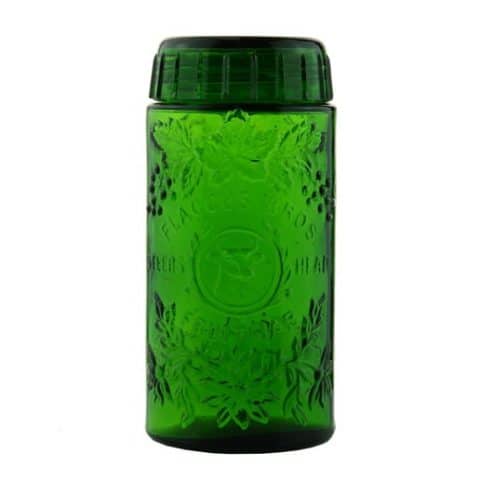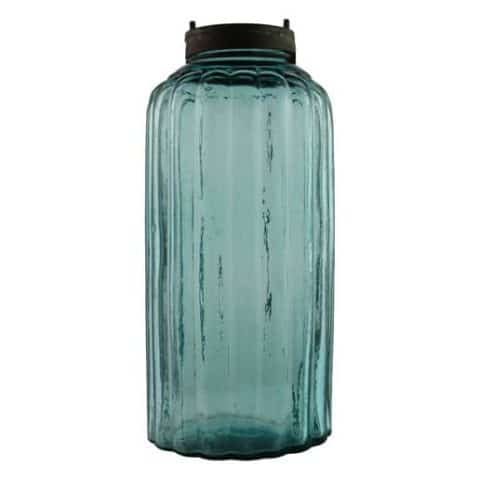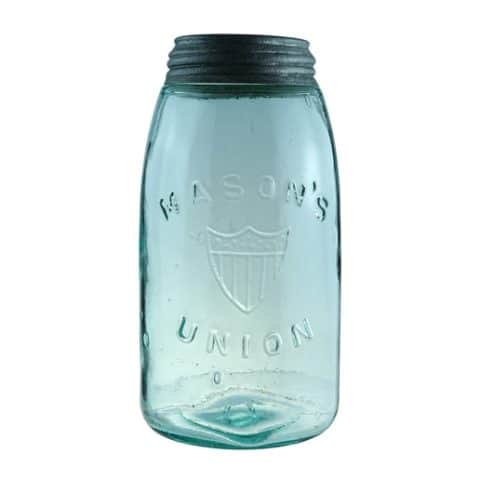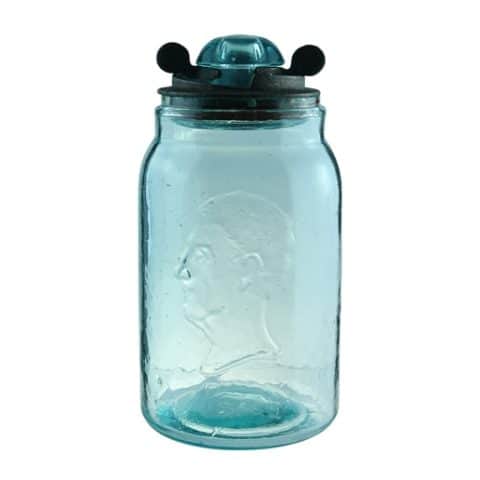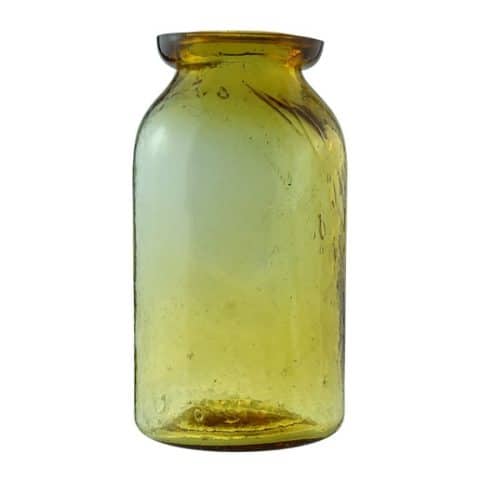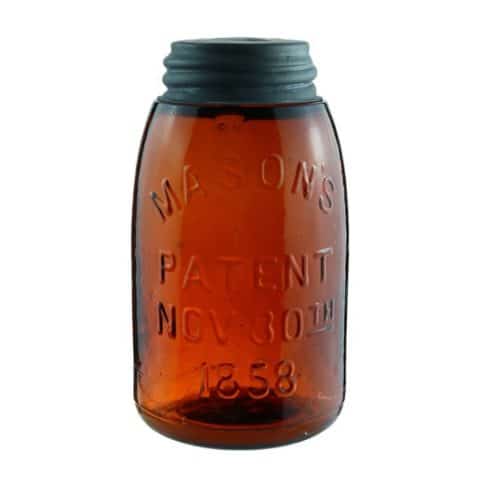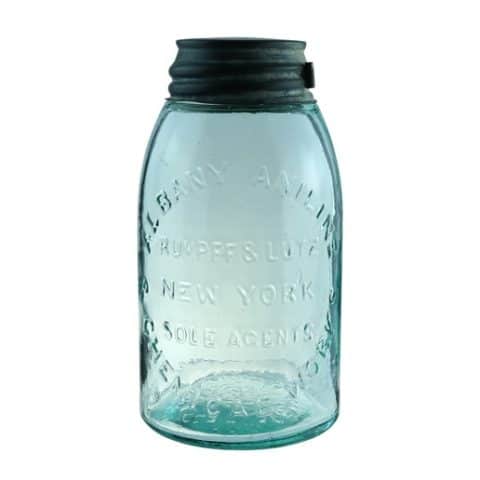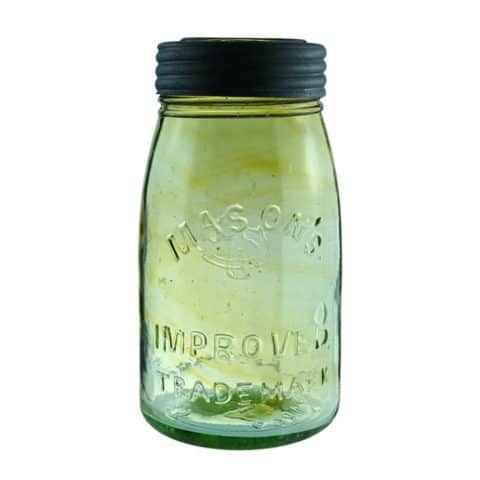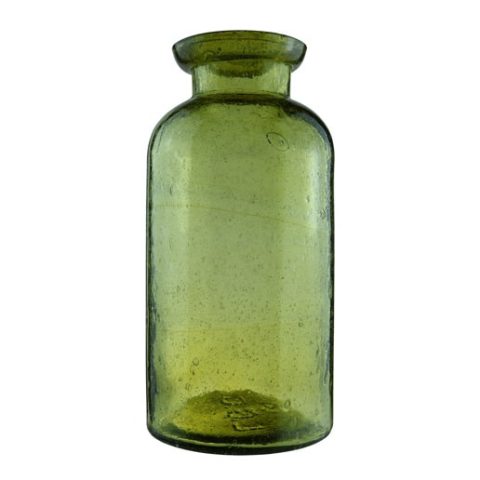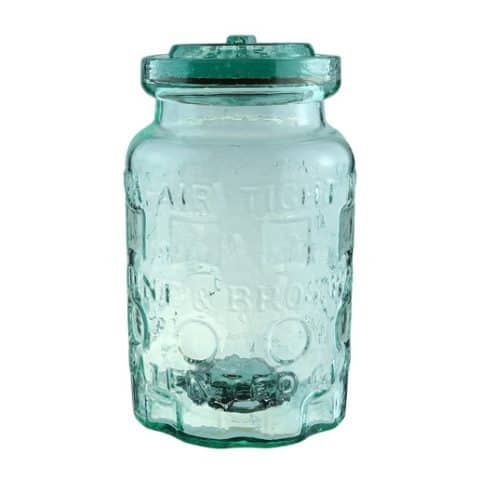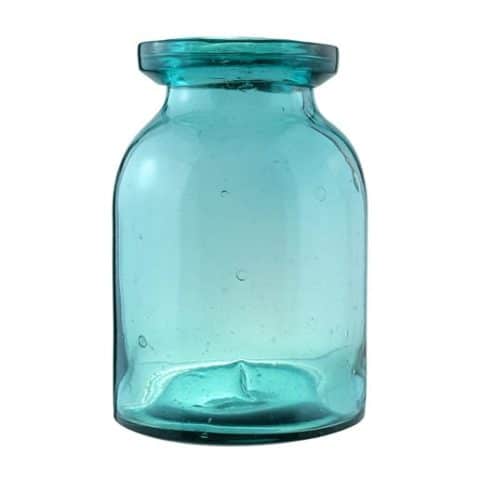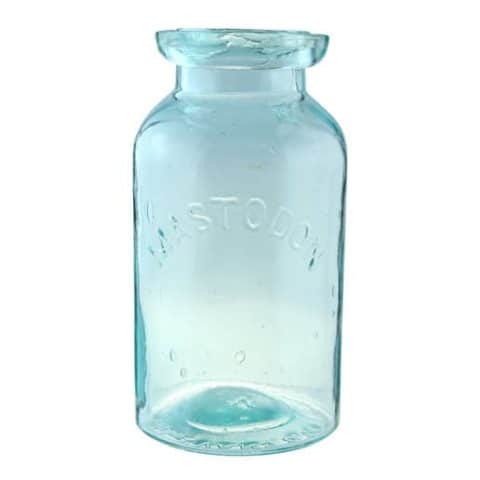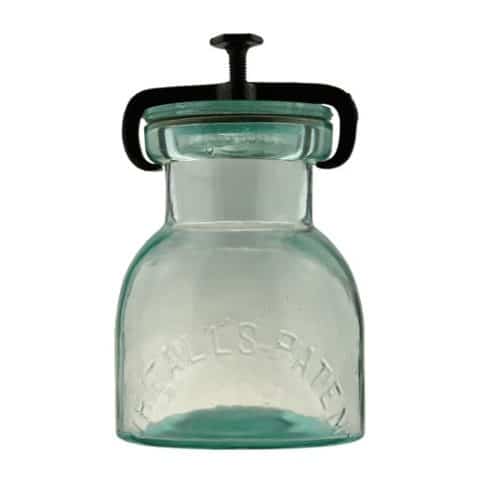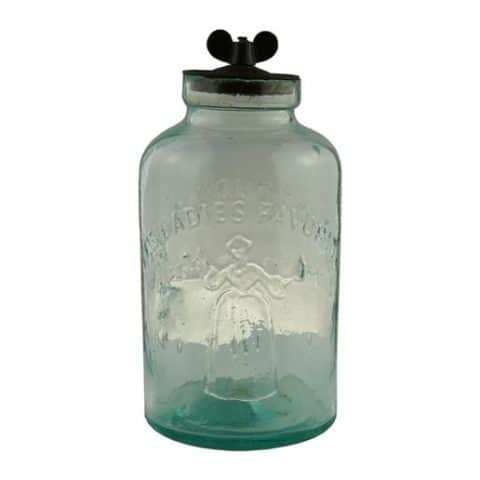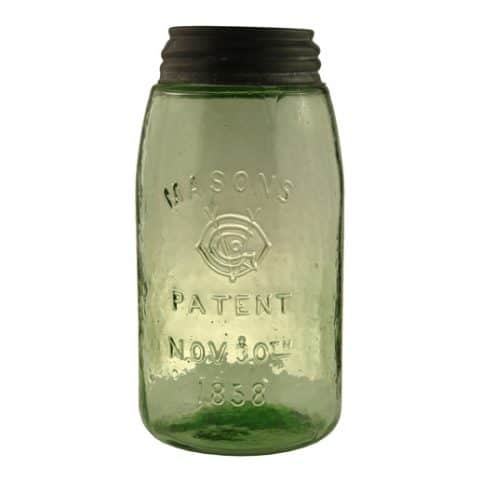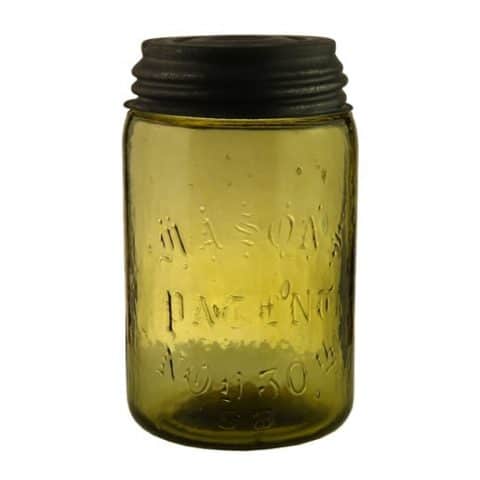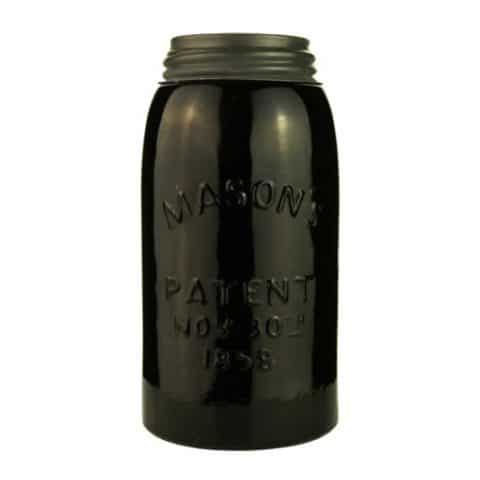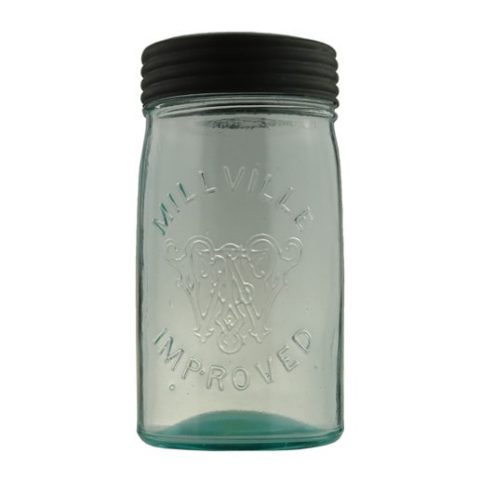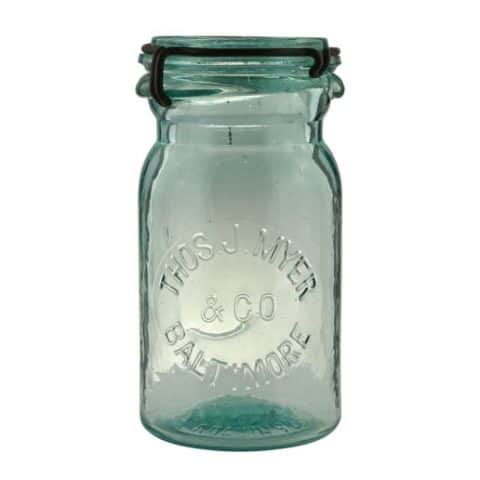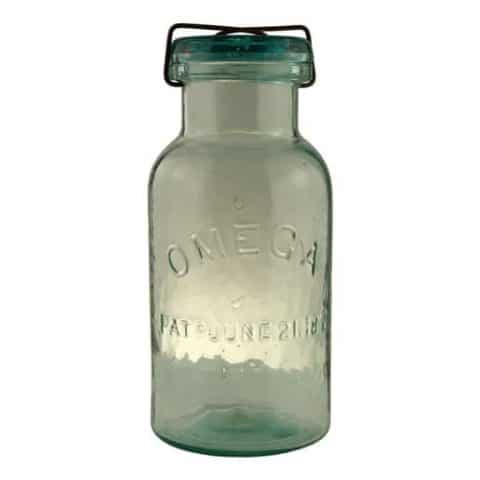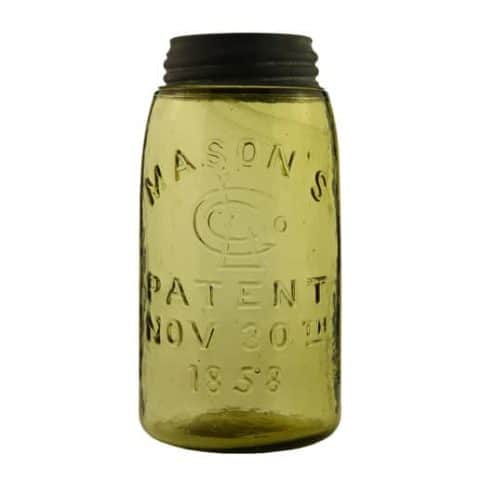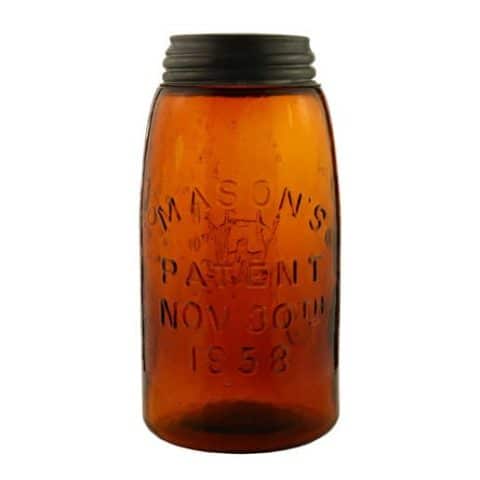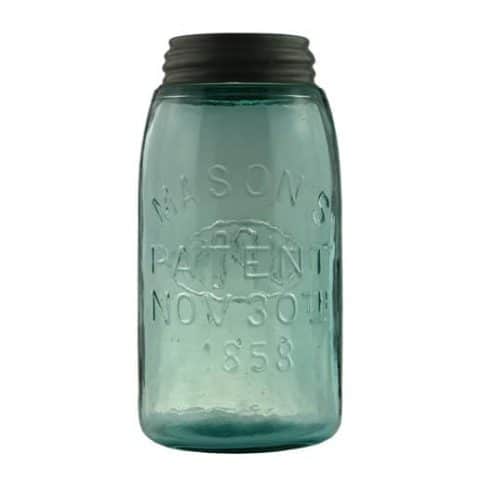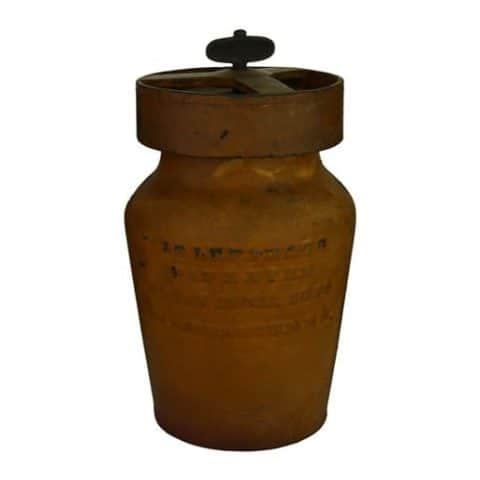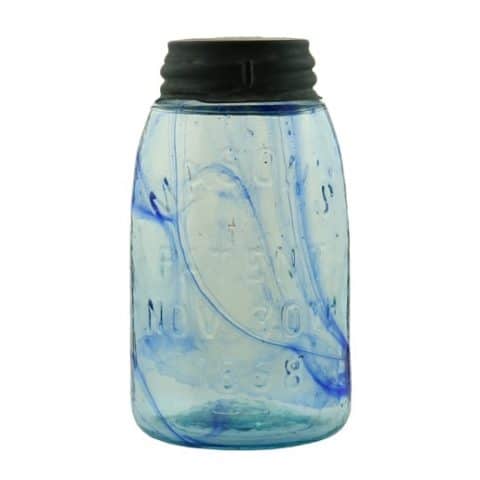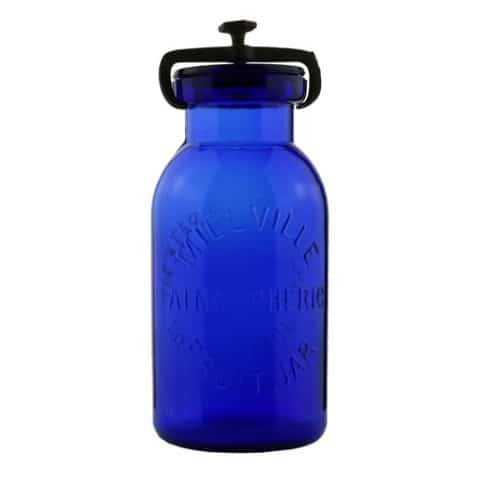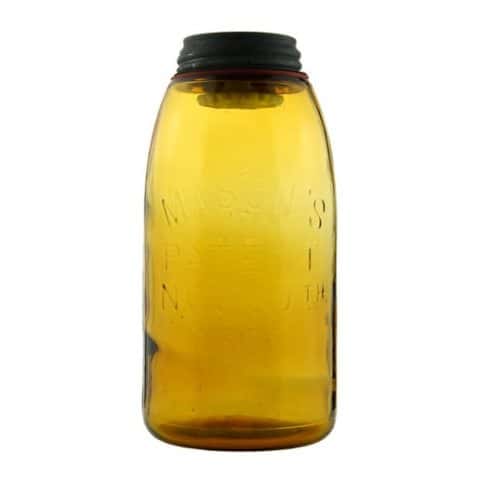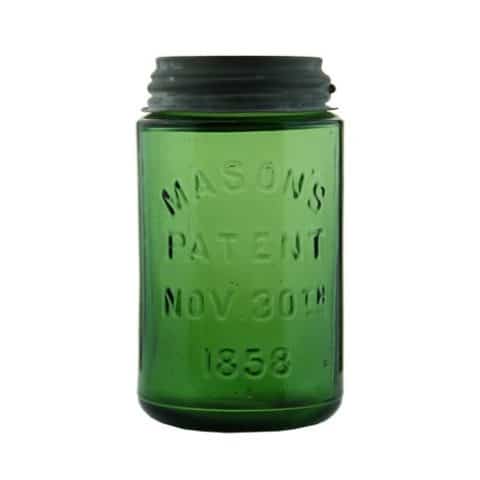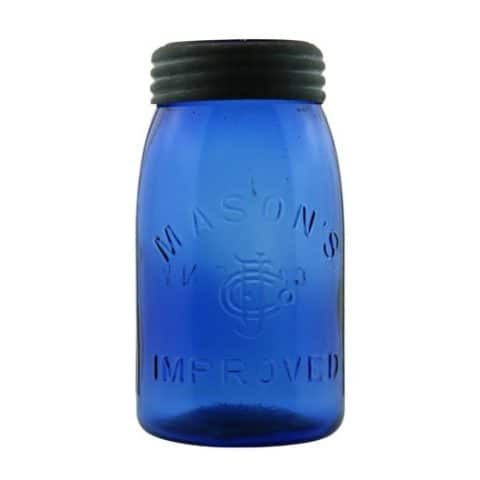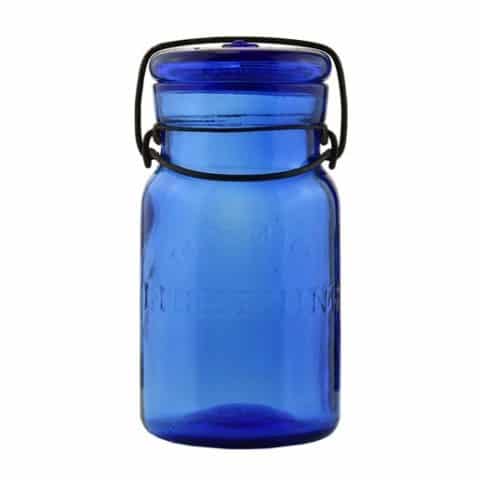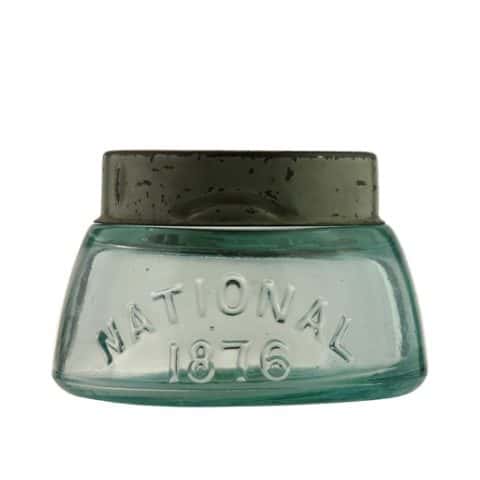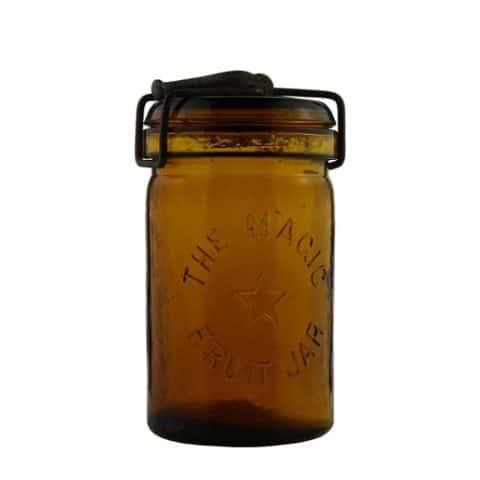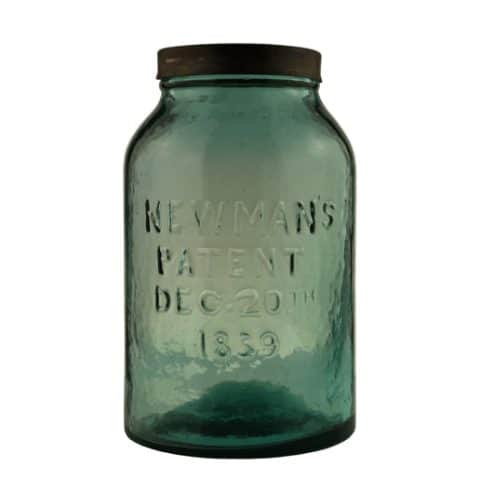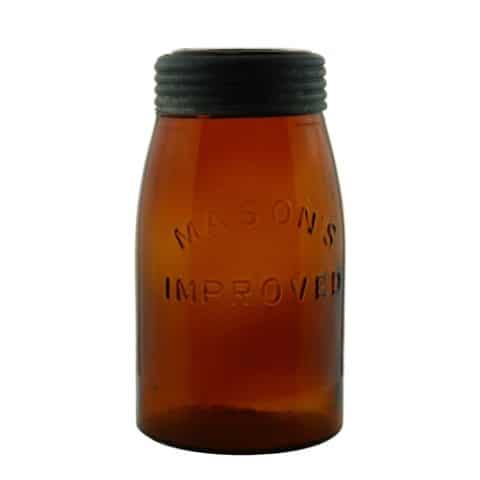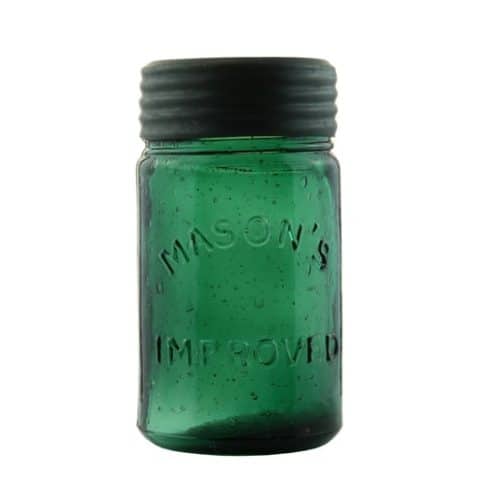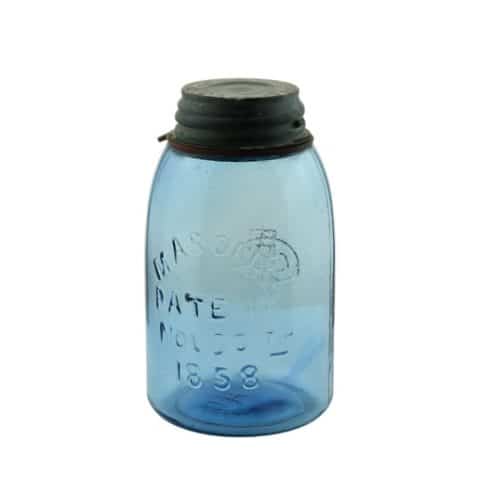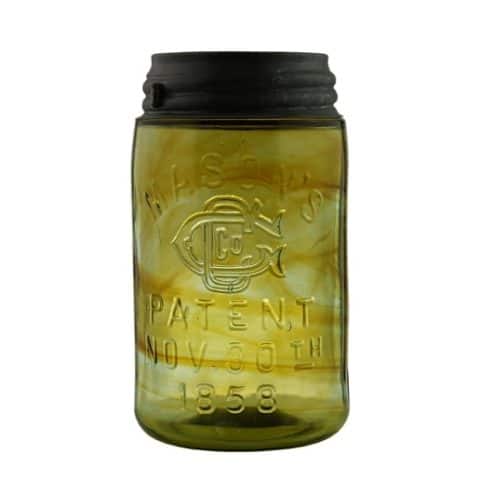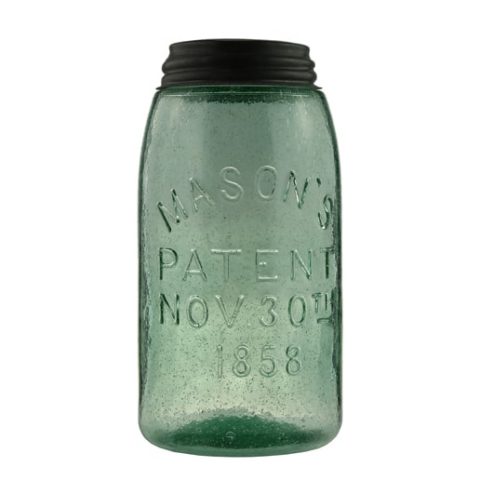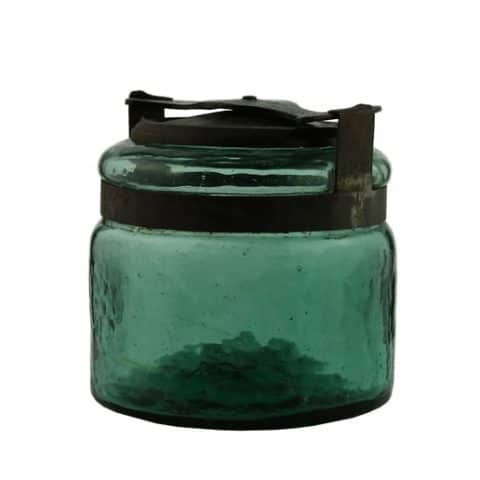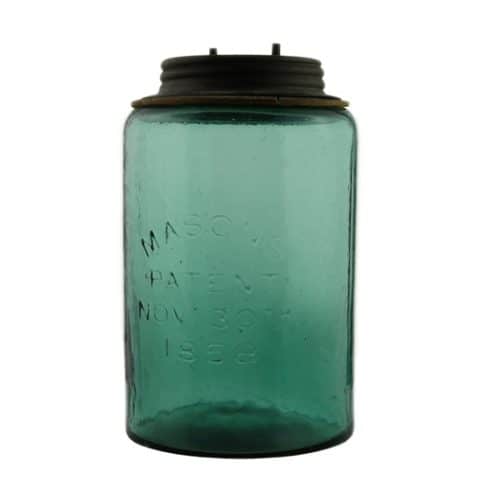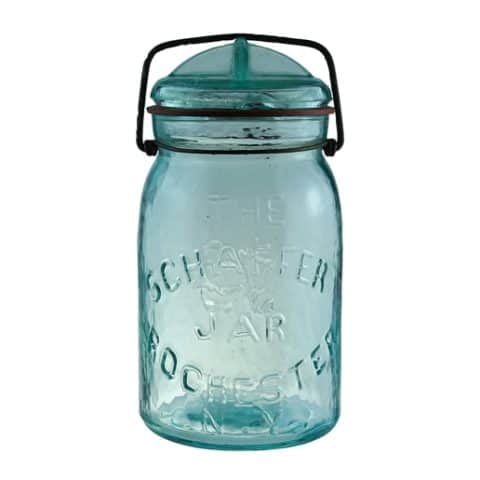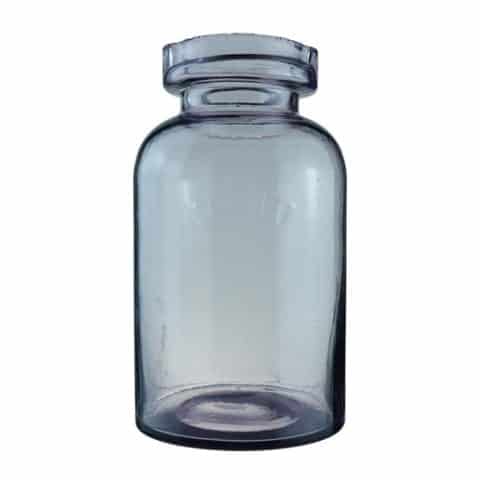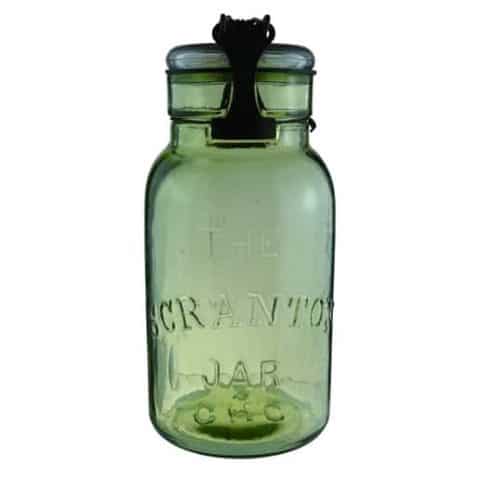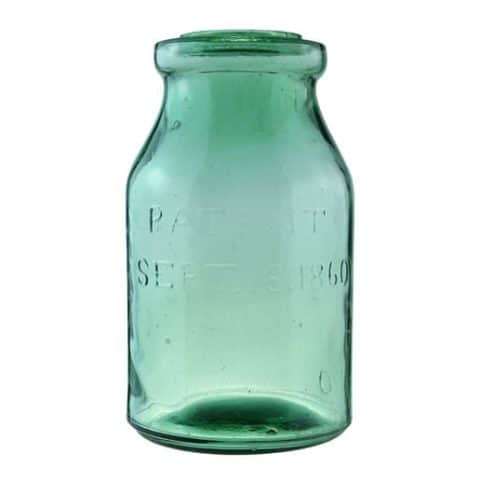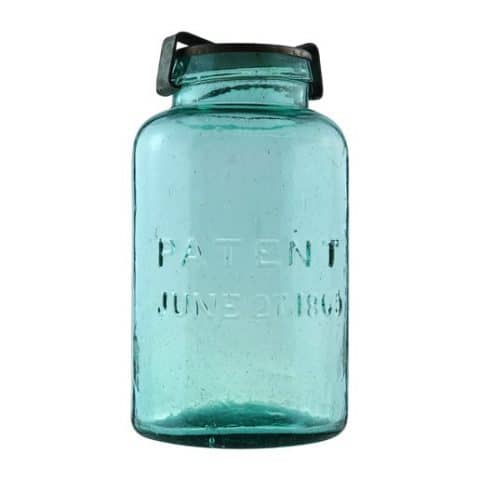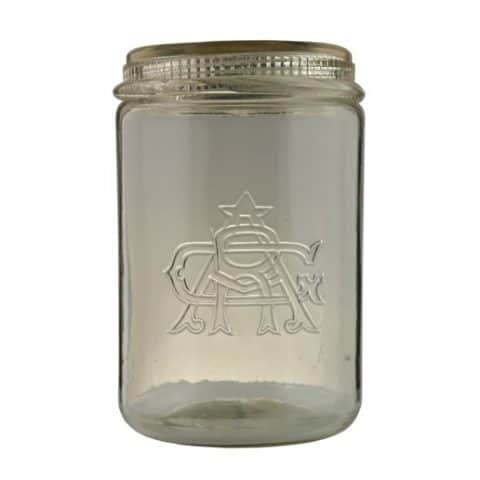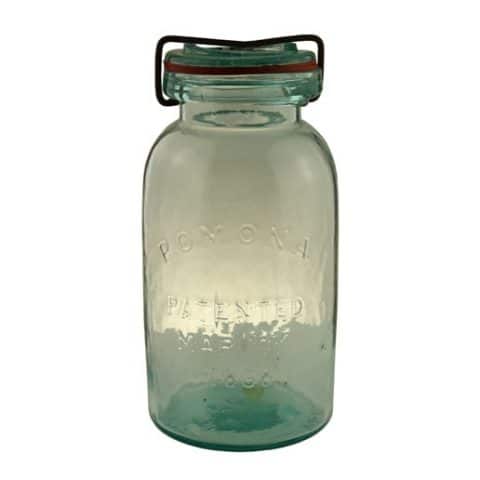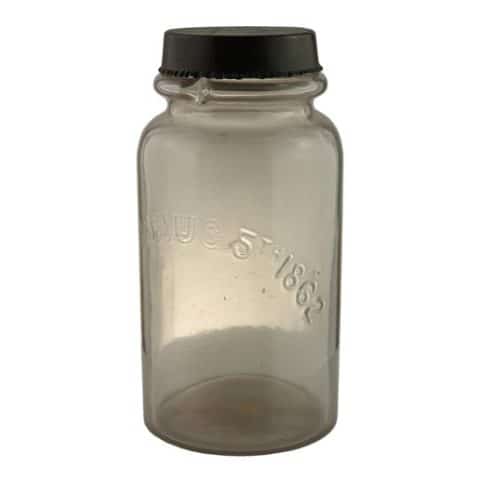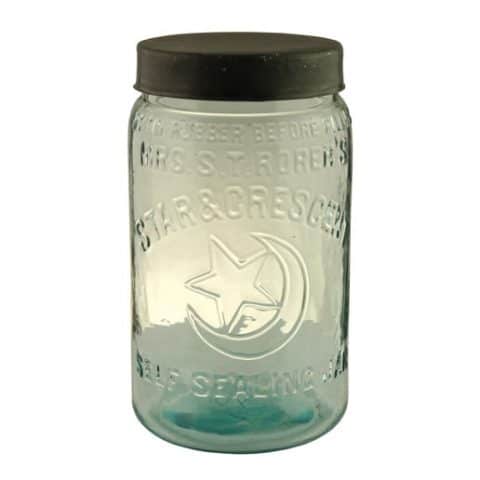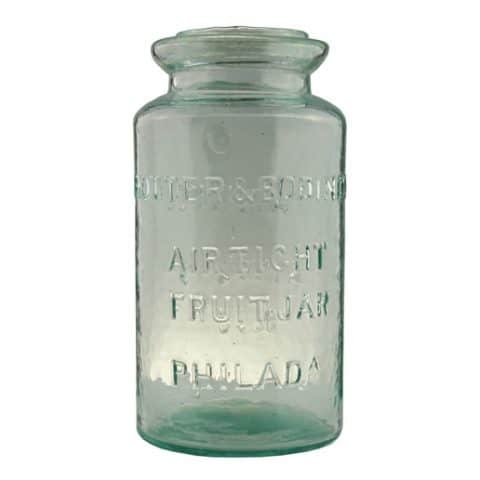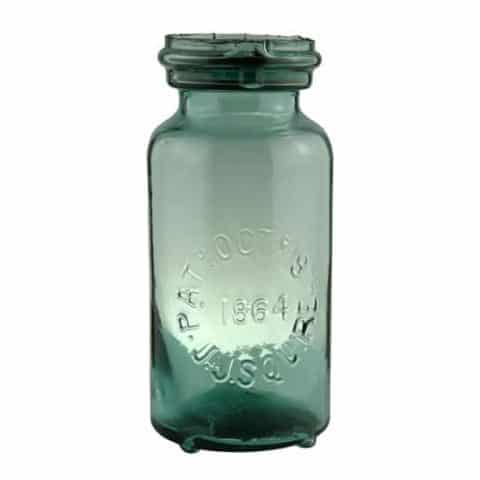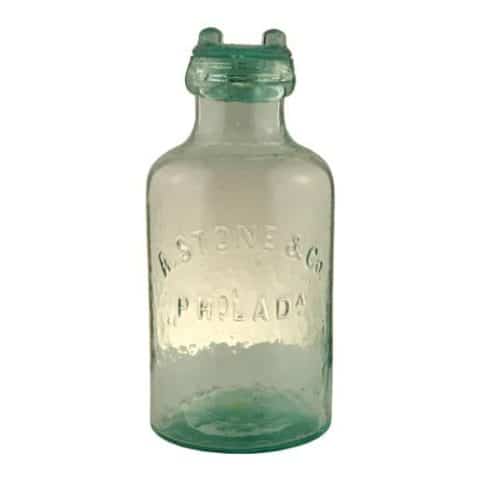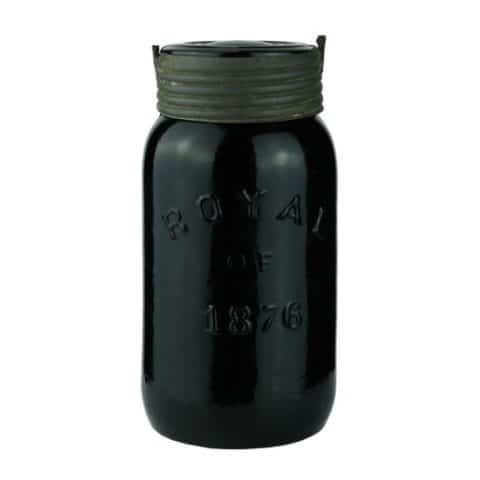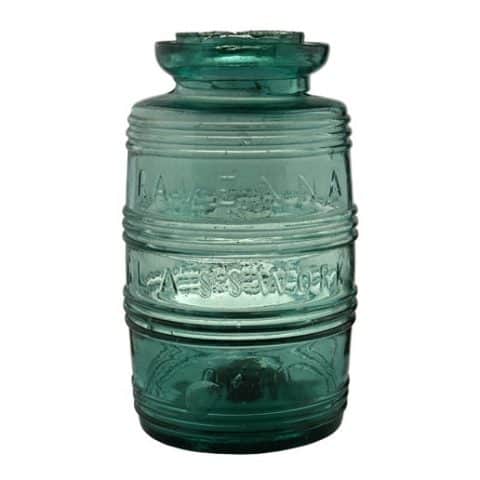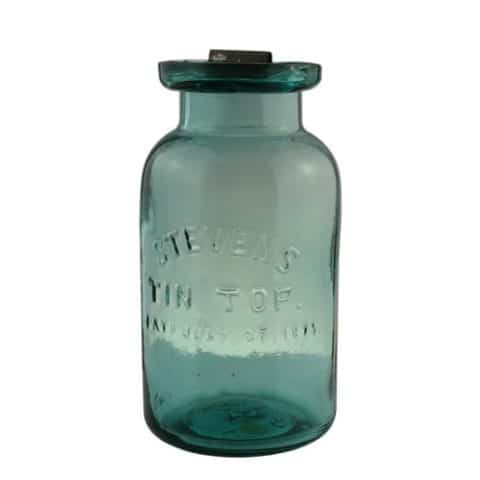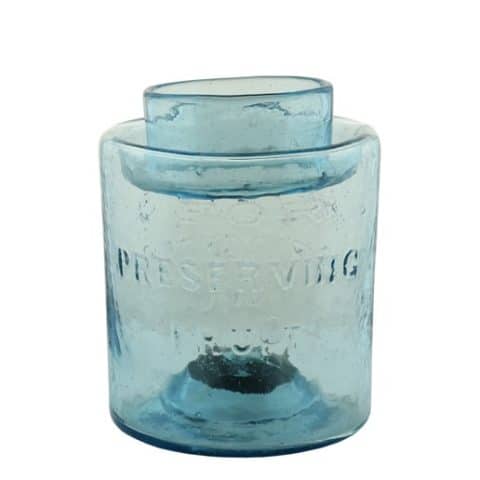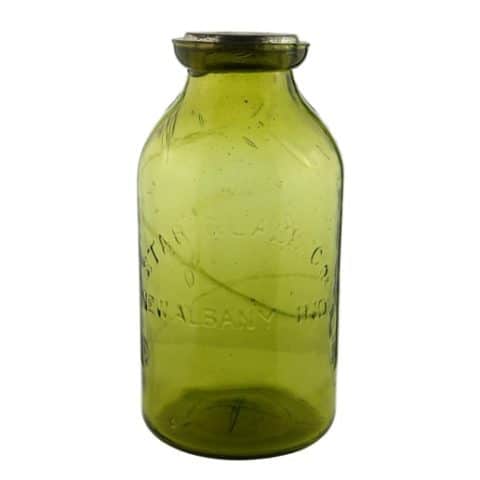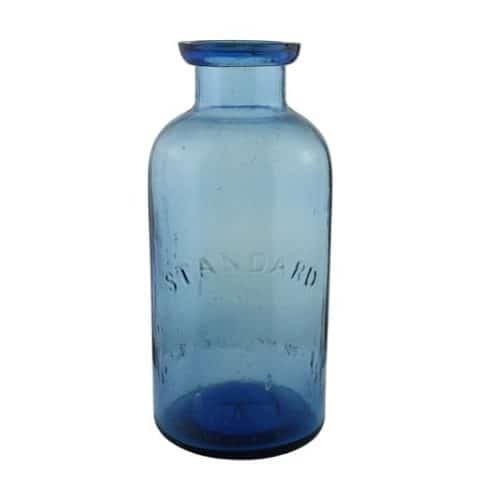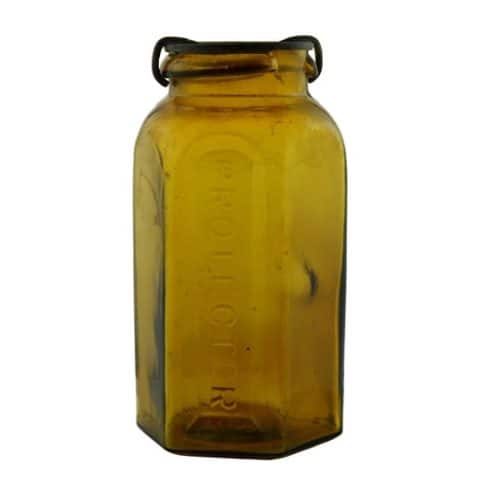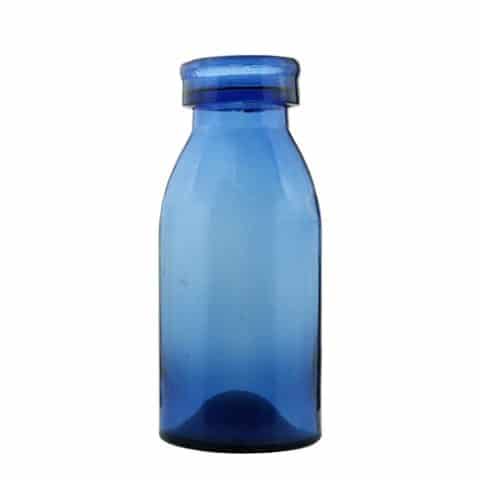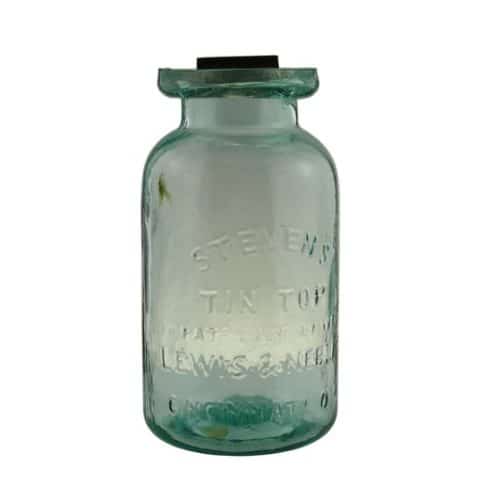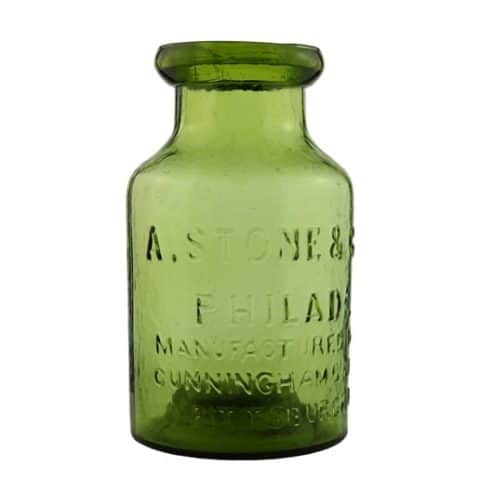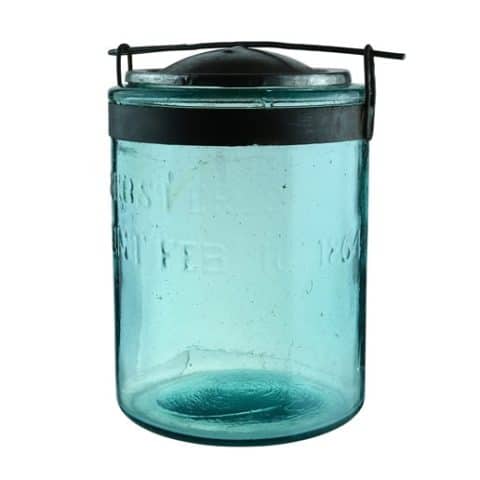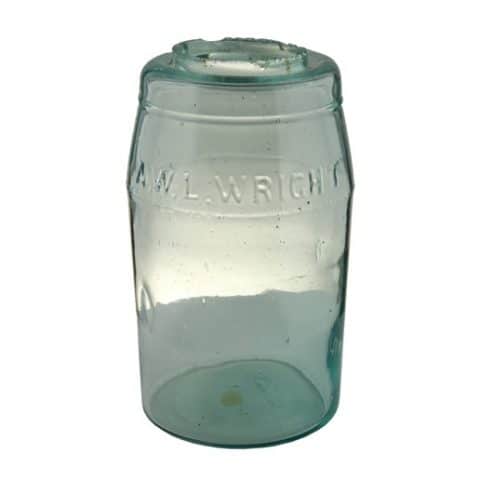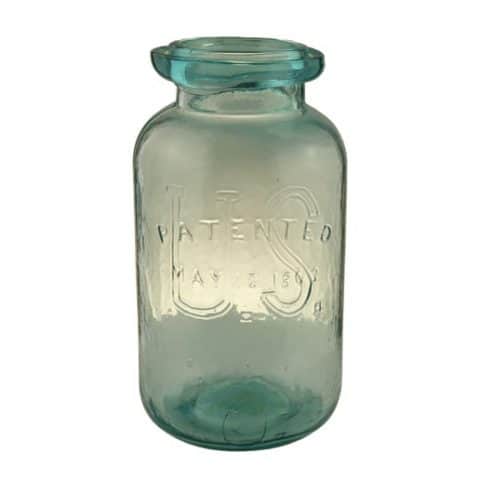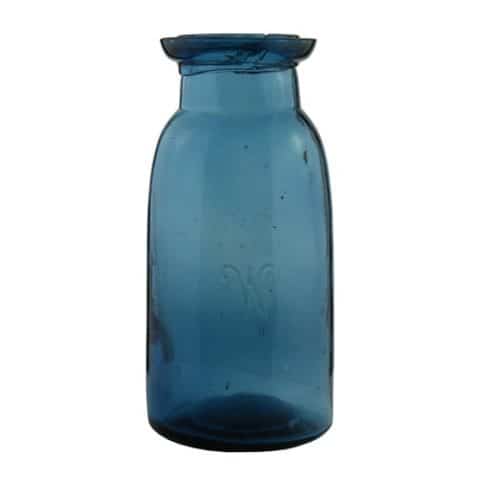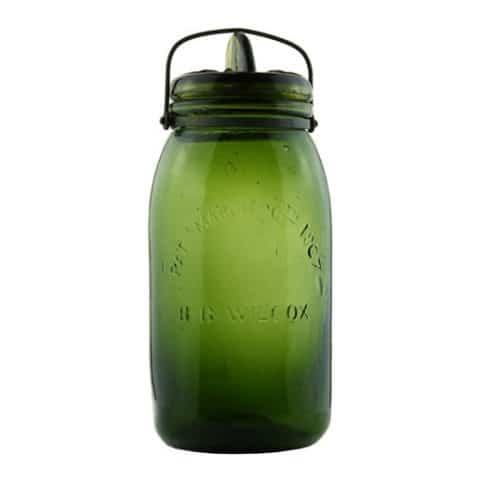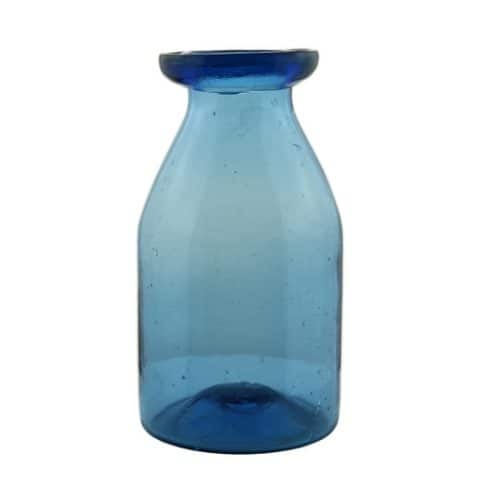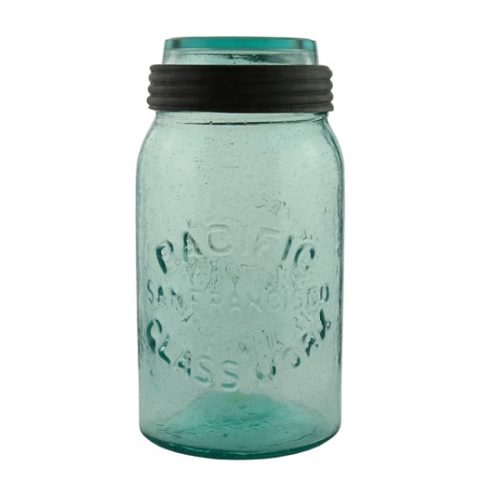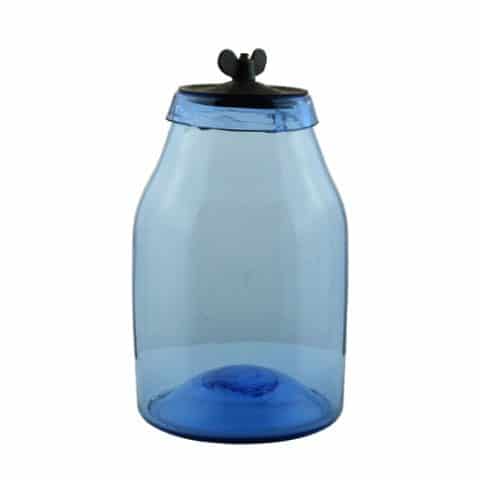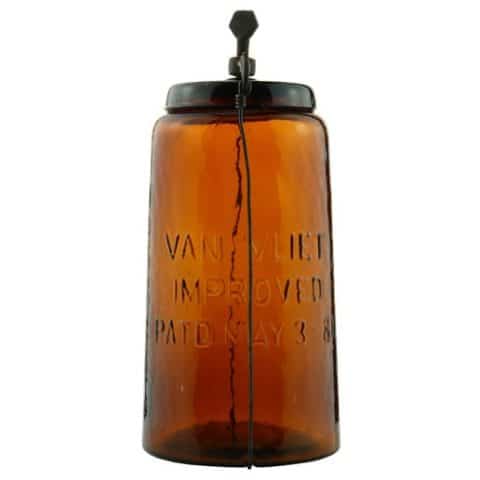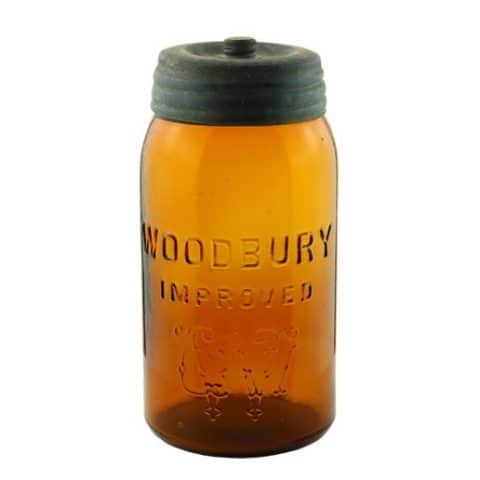Stevens Tin Top – Lewis & Neblett Jar
STEVENS TIN TOP
Patd July 27, 1875
Lewis & Neblett
Cincinnati, O.
Lewis & Neblett Co., Cincinnnati, Ohio
Shields, King & Co., Newark Star Glass Works, Newark, Ohio
Aquamarine Groove Ring Wax Sealer Quart
Provenance: Jerry McCann Collection
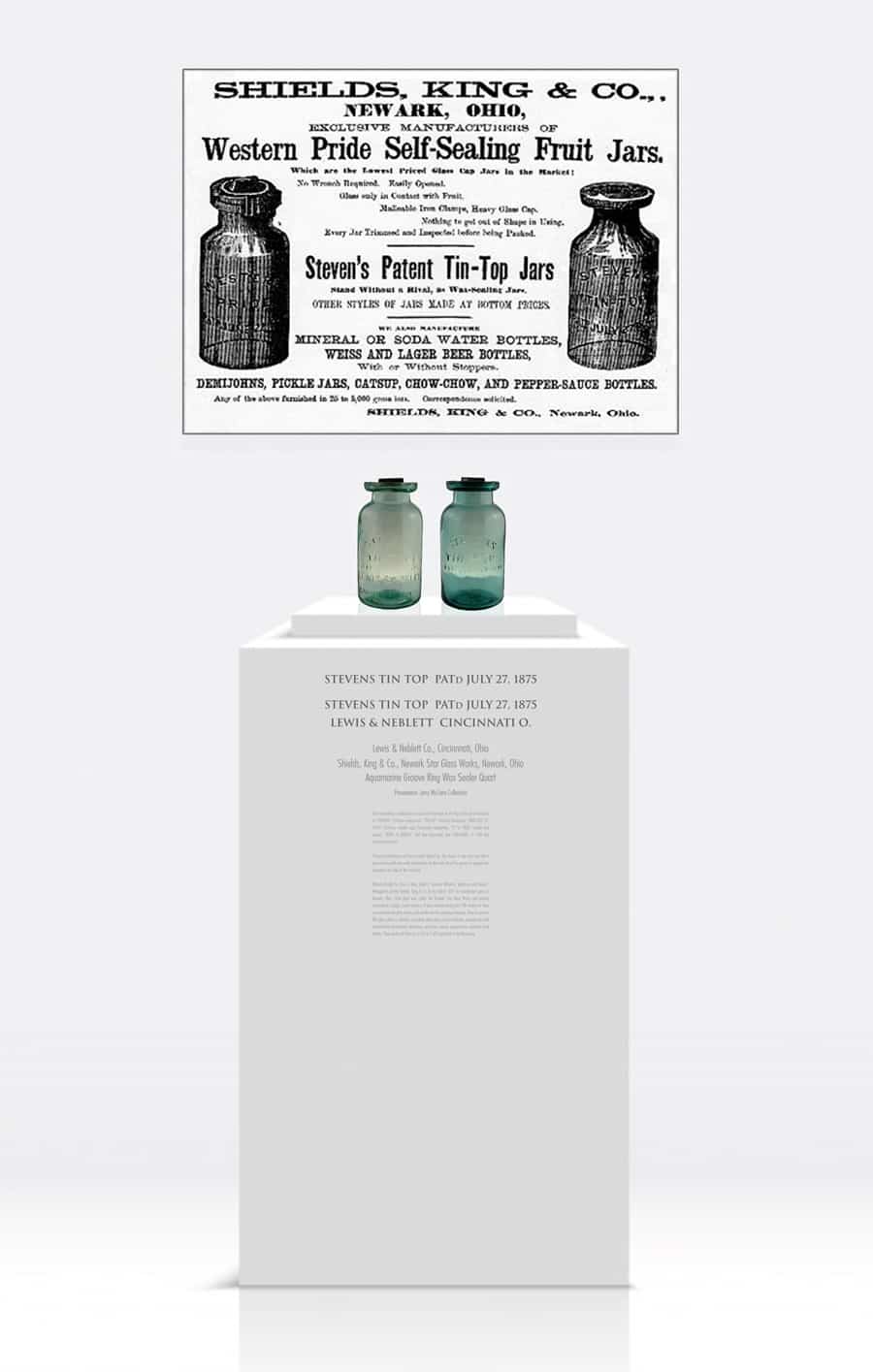
Here is a prime example of a “Stevens Tin Top” jar made for the Lewis & Neblett Co. of Cincinnati, Ohio. Lewis & Neblett were known for their distinctive glass and china items. The jar was made circa 1876 to 1878 by the Newark Star Glass Works of Newark, Ohio. The proprietor was Shields, King & Co. This variant of the “Stevens Tin Top Patd July 27, 1875” jar can only be found in aquamarine quarts. One can only imagine how impressive the jar looked, with the whittled glass, when it was full of preserves, sitting on a shelf in a cupboard.
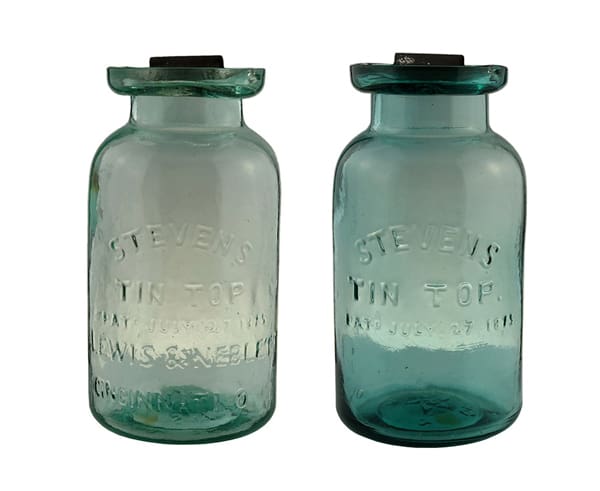
Embossed in a sans serif typestyle on the face of the jar in five lines is ‘STEVENS’ (1st line convex arch), ‘TIN TOP’ (2nd line horizontal), ‘PATD JULY 27, 1875’ (3rd line, smaller copy, horizontal straight-line. “D” of ‘PATD” smaller and raised), ‘LEWIS & NEBLETT’ (4th line horizontal) and ‘CINCINNATI, O’ (5th line horizontal at base).
The jar is hand-blown and has a tooled applied lip. The closure is a wax seal with a grooved ring with two small indentations on the outer lip of the groove to engage two projections on edge of the metal lid.
William Shields Sr., Oren G. King, David E. Stevens, William E. Atkinson, and David C. Winegarner started Shields, King & Co. in the fall of 1871 to manufacture glass in Newark, Ohio. Their plant was called the Newark Star Glass Works and initially consisted of a single, six-pot furnace. It was common during the 19th century to have one name for the glass factory and another for the operating company. They focused on flint glass which is colorless, and other glass items such as fruit jars, mineral and soda water bottles, beer bottles, demijohns, pickle jars, catsup, pepper-sauce, and other food bottles. They would sell their jars in 25 to 5,000 gross lots or by the boxcar.
The firm ran the glassworks until the spring of 1878 when their glass blowers went on strike. They ran out of glass and held out against the strikers causing them to shut down the factory for two years. In the summer of 1880, they started up again under the name of a man named Everett from Cleveland who had purchased the manufactory. W. E. Atkinson would manage and they increased their business greatly.
The glassworks employed between 105 and 110 employees who were men and boys. Sand, soda, and lime were the principal materials used in the manufacture of glassware. The sand was procured at Glenford, Perry County, Ohio, the soda ash came from Liverpool, England via Baltimore, and the lime from Delaware, Ohio.
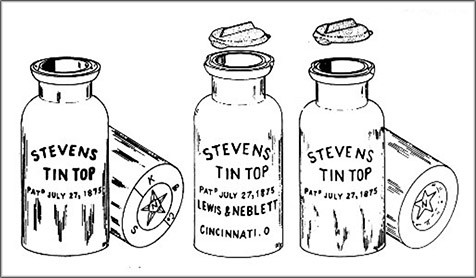
David E. Stevens and Richard F. Lumley patented two fruit jars in 1875. The pair filed for a patent on March 19 and received Patent No. 165,962 on June 22 that came to be called the “Western Pride Self Sealing Fruit Jar.” They filed for the second patent on June 30 and received Patent No. 165,962 on July 27 that became the “Stevens Patent Tin Top Fruit Jar.” Stevens, as previously noted, was with Shields, King & Co.
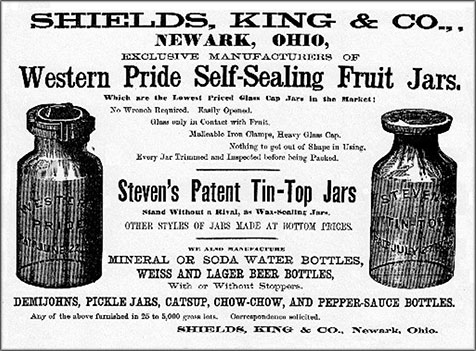
Advertising said that Shields, King & Co. were the exclusive manufacturers of Western Pride Self-Sealing Fruit Jars using glass caps. They said these jars were the lowest priced in the market and that no wrench was required and that it was easy to open. They said that the glass was the only material to come in contact with the fruit or preserves with no tin, iron, or cement coming in contact with the contents. Every jar was trimmed and inspected before being packed and shipped. This was a transitional moment in jar-making as the shift from tin to glass caps was occurring. Shields, King & Co. also made the Steven’s Patent Tin-Top Jars and said they stood without rival as wax-sealing jars. This example is represented in our museum.
See the museum example of the related Steven’s Patent Tin Top Jar
Primary Image: The Stevens Tin Top Lewis & Neblett jar imaged on location by Alan DeMaison, FOHBC Virtual Museum Midwest Studio
Support: Reference to Newark Star and the Everett Factory by Bill Lockhart, Beau Schreiver, Bill Lindsey, and Carol Serr
Support: Reference to Red Book #11, the Collector’s Guide to Old Fruit Jars by Douglas M. Leybourne, Jr. Alice Creswick illustration courtesy Doug Leybourne.
Support: Reference to Fruit Jar Annual 2020 – The Guide to Collecting Fruit Jars by Jerome J. McCann
Support Images: Secondary images from Greg Leybourne, North American Glass
Join the FOHBC: The Virtual Museum is a project of the Federation of Historical Bottle Collectors (FOHBC). To become a member.

